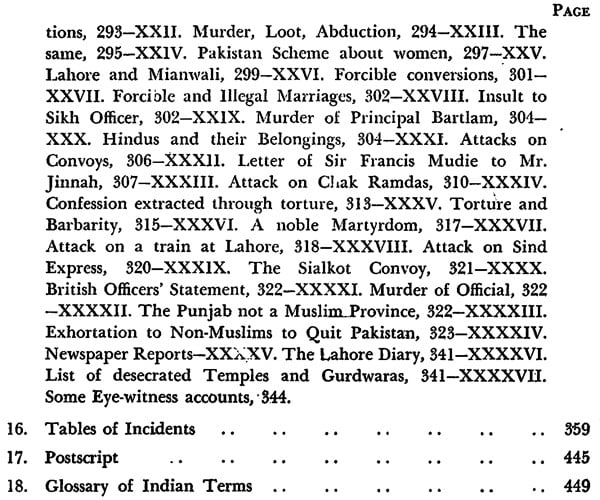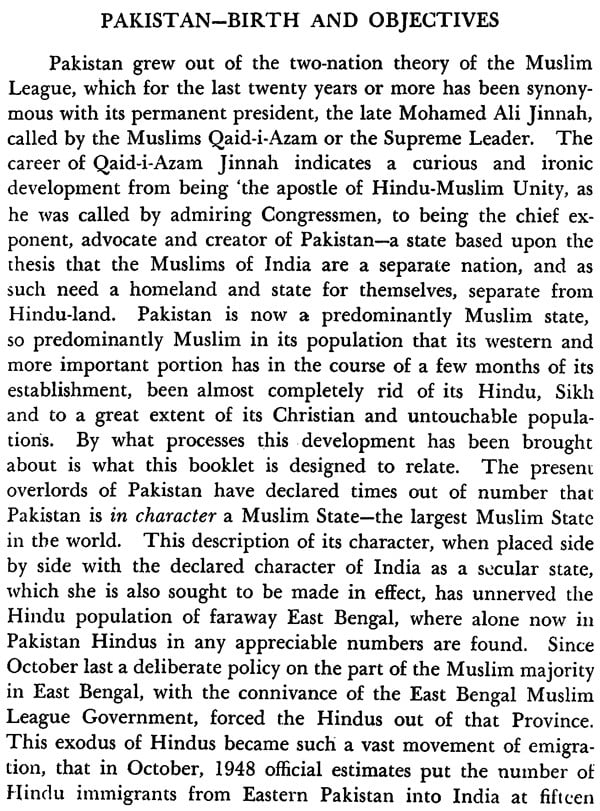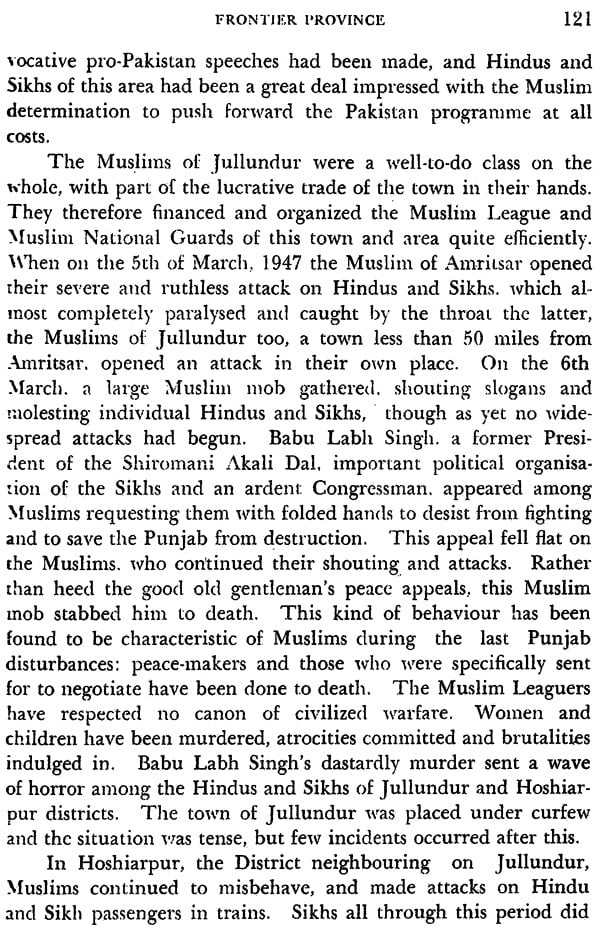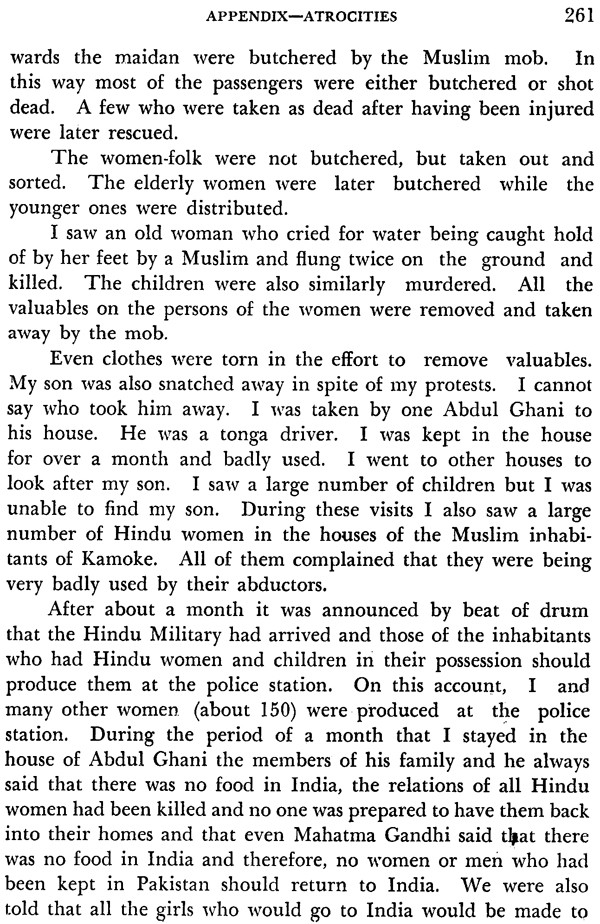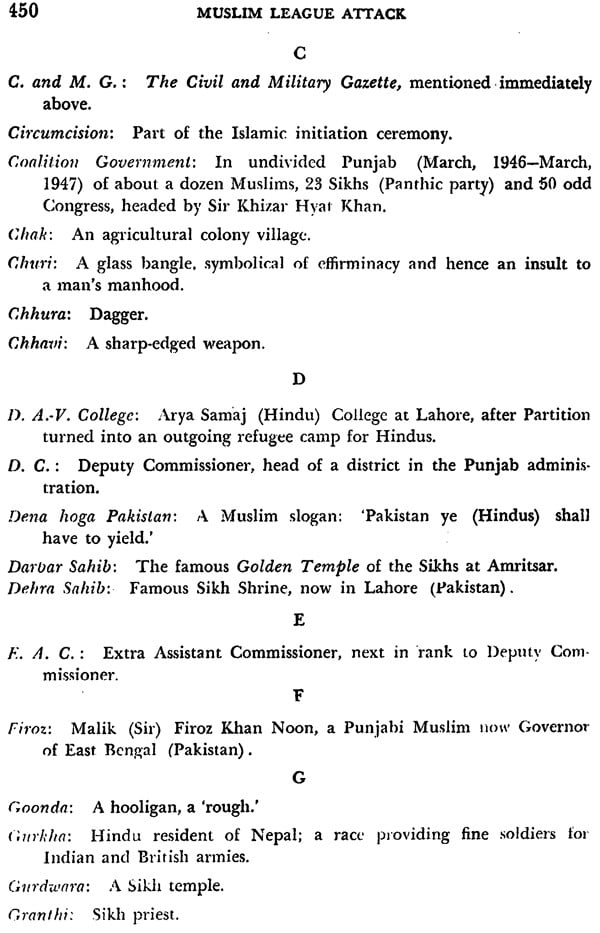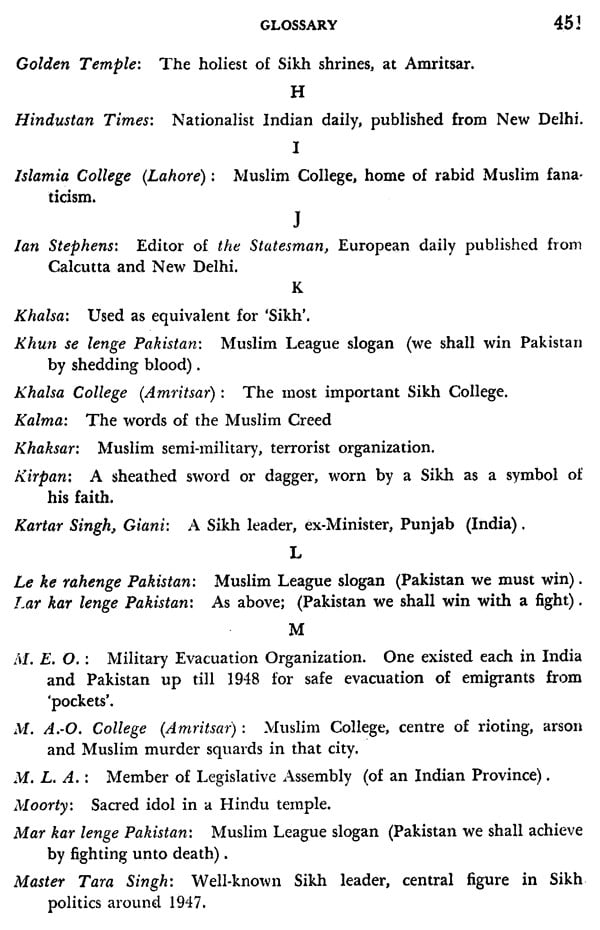
Muslim League Attack On Sikhs and Hindus in The Punjab 1947
Book Specification
| Item Code: | NBZ733 |
| Author: | Gurbachan Singh Talib |
| Publisher: | Voice of India New Delhi |
| Language: | English |
| Edition: | 1991 |
| ISBN: | 9789385485114 |
| Pages: | 453 |
| Cover: | PAPERBACK |
| weight of the book: 0.63 kg. | |
| Other Details | 8.50 X 5.50 inch |
| Weight | 630 gm |
Book Description
Sardar Gurbachan Singh Talib mentions a broader dimension also and connects the events of the forties with the League politics and the League politics itself with the larger Muslim politics. He does not develop the point, but he does more than most other authors whose vision remains confined in the best of cases to the League's activities and who provide a narrow and even distorting framework. The fact is that League politics did not initiate Muslim politics but was itself a part of this larger Muslim politics; it was neither the latter's beginning nor its end but its continuation. Muslim politicians and scholars in Pakistan see it this way.
Muslim politics, in turn, is grounded in Muslim theology. Islam believes in one God (their God) but two humanities: the believers and the infidels. Islam teaches Jihad or holy war against the infidels. It is not that the infidels have done any harm to Islam or Muslims but it is simply because holy war against the infidels "is established as a divine ordinance, by the word of God, who has said in the Koran, 'Slay the Infidels'." So the believers are at war with the infidels all the time, though, in practice, a war may not be possible at a particular time.
But Hindu India remains confused and even unconcerned. It has been a poor student of history; it has therefore also neglected its lessons; it has failed to read properly the forces, particularly ideological forces, that have been and are still at work to keep it down. In fact, it does not even acknowledge them. It still stubbornly clings to its old assumption that the League politics came out of the scheming head of one Jinnah who was aided and abetted by the British, and that Muslims and Islam had nothing to do with it; that, in fact, they were reluctant victims of this politics and were pushed into it by an intransigent Hindudom.
All this we believe partly because it involves doing nothing, anticipating nothing, planning nothing, and we can continue to live from day to day. A more realistic and faithful appraisal will impose on us duties of a different kind and scope, duties which we therefore shirk. We have learnt to live without thinking and we have got used to the idea of a shrunken and shrinking India. We can now think without Afghanistan, without the North-West Frontier Province, without Punjab and Sind, without East Bengal, and we can do the same without Kashmir and other parts in the future. Why assume avoidable responsibilities?
Or perhaps the sickness is deeper. Long back, Sri Aurobindo saw the "root cause of India's weakness," not in foreign yoke or poverty or dearth of spiritual experience, but in the "decline of thinking power." Everywhere he saw "inability or unwillingness to think, which is a sign of tragic decadence."
At the end of the book, the author gives an Appendix, 100 pages of about 50 eye-witness accounts of those atrocities. It contains statements of those who saw themselves attacked, their houses burnt, their kith and kin killed, their womenfolk abducted but who themselves survived to relate their account. The section also includes press reports and other first-hand accounts. For example, one report which appeared in The Statesman of April 15, 1947 narrates an event that took place in village Thoha Khalsa of Rawalpindi District. It is a story of tears and shame and also of great sacrifice and heroism. The story tells us how the Hindu-Sikh population of this tiny village was attacked by 3000-strong armed Muslims, how badly outweaponed and outnumbered, the besieged had to surrender, but how their women numbering 90 in order to "evade inglorious surrender" and save their honour jumped into a well "following the example of Indian women of by-gone days." Only three of them were saved. "There was not enough water in the well to drown them all," the report adds. The author also gives an 85-page long "list of atrocities," date by date and region by region, that took place during the months from mid-December 1946 to the end of August 1947 And these represent only "a small fraction of what really happened," and they have to be multiplied "a hundred-fold or more...to get the right proportions," the author says.
Book's Contents and Sample Pages

